A drop-shaped scent bottle in clear crystal, cut on the sides and base with concave motifs. It ends with a gold ring chiselled with Gothic-style ogival motifs. A gold dome-shaped stopper topped with a pearl is made up of five fully chased lobes and crossed with stylised royal blue representations. It is preserved in its original case with initials R B surmounted by the crown. Mark on the case Froment Meurice, goldsmith jeweller of the city of Paris, Hotel de ville rue de Lobau 2.
Generally hidden and only revealed when their owners faint, salt bottles are fascinating evidence of the taste of the Romantic period. As feminine toiletries, they were already present in ancient Greece and Rome and experienced a phenomenal boom in the 17th century, particularly at the court of Louis XIV. The fashion for these small bottles exploded even more in the 18th century before giving rise to the most diverse creations in the following century. However, the classic shapes were adopted by the majority: flattened, cylindrical or pear-shaped, some of these flasks were even fitted with a chain and a ring so that they could be kept in the hand.
Froment Meurice: House founded in 1714 by the silversmith François Froment and became Froment-Meurice by the remarriage of his widow with the silversmith Pierre Meurice.Taken over in 1832 by François Froment's son, François-Désiré Froment-Meurice (Paris 1802-1855) and established 2, rue Lobau, then 52, rue du Fbg Saint-Honoré in 1849. When François-Désiré died, his wife took over the management of the firm, and his son P. H. Emile Froment-Meurice (Paris 1837-1913) succeeded him in 1859. The company remained in business until 1907.
Gold: 18 carat
Small restoration to the enamel
Circa: 1850
Dim: H: 10,2 cm W: 3,5 cm D: 1,7 cm









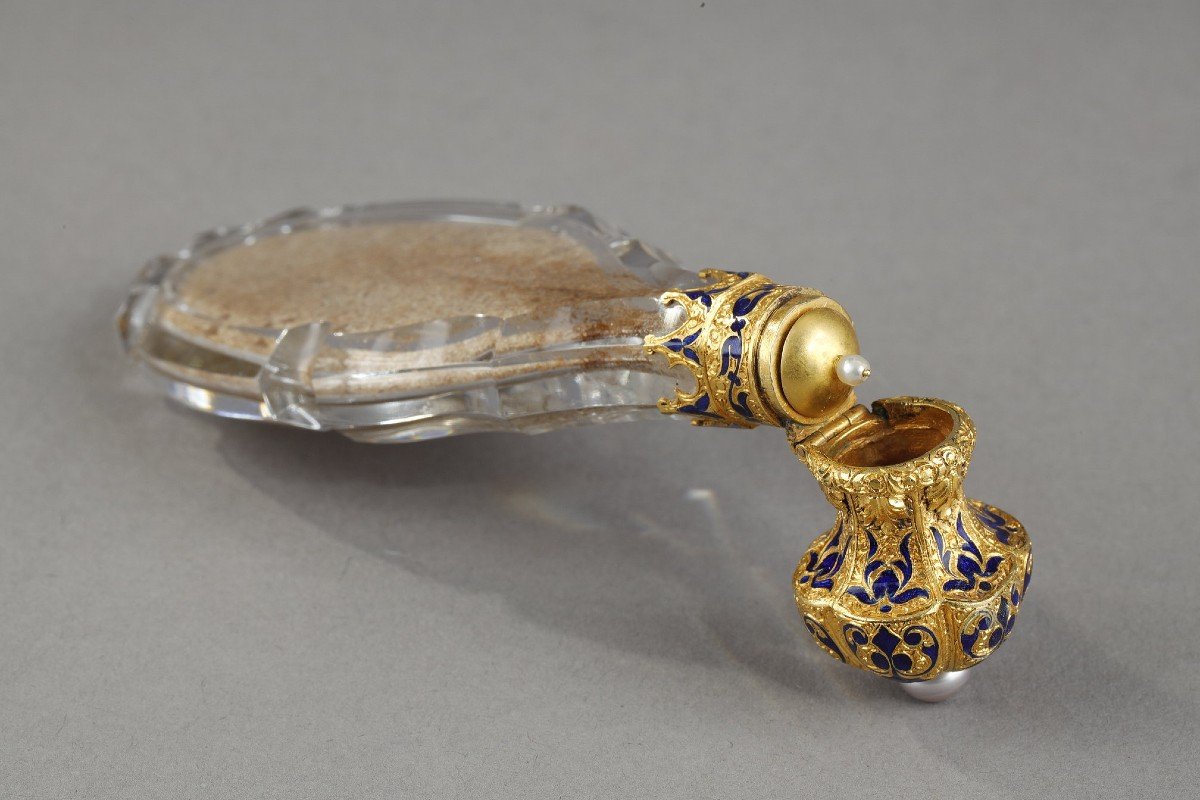




















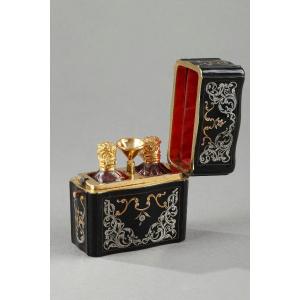




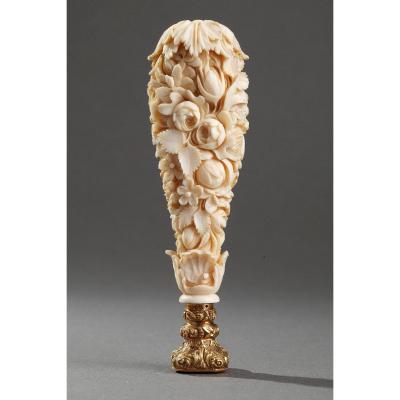







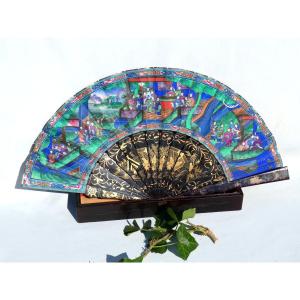

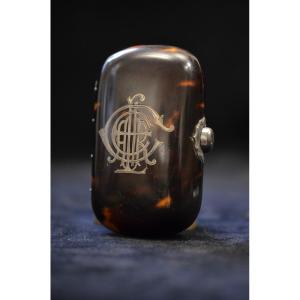




 Le Magazine de PROANTIC
Le Magazine de PROANTIC TRÉSORS Magazine
TRÉSORS Magazine Rivista Artiquariato
Rivista Artiquariato